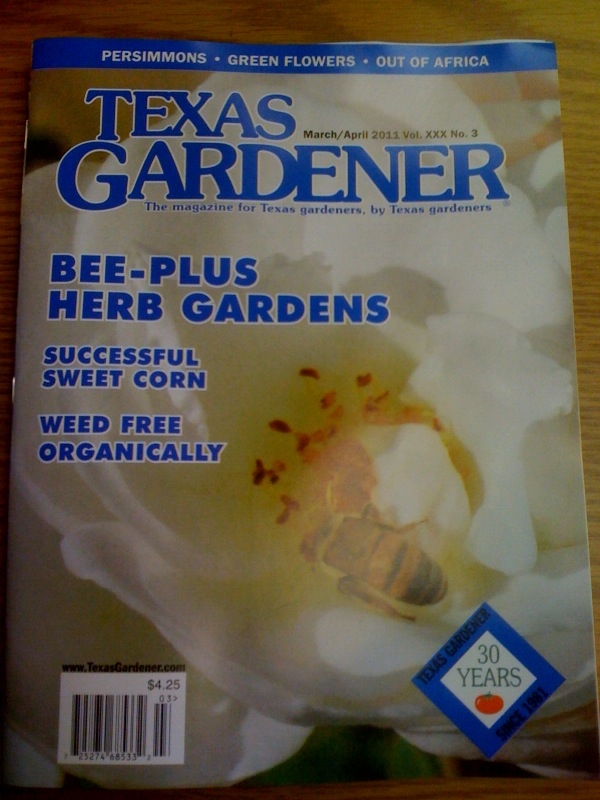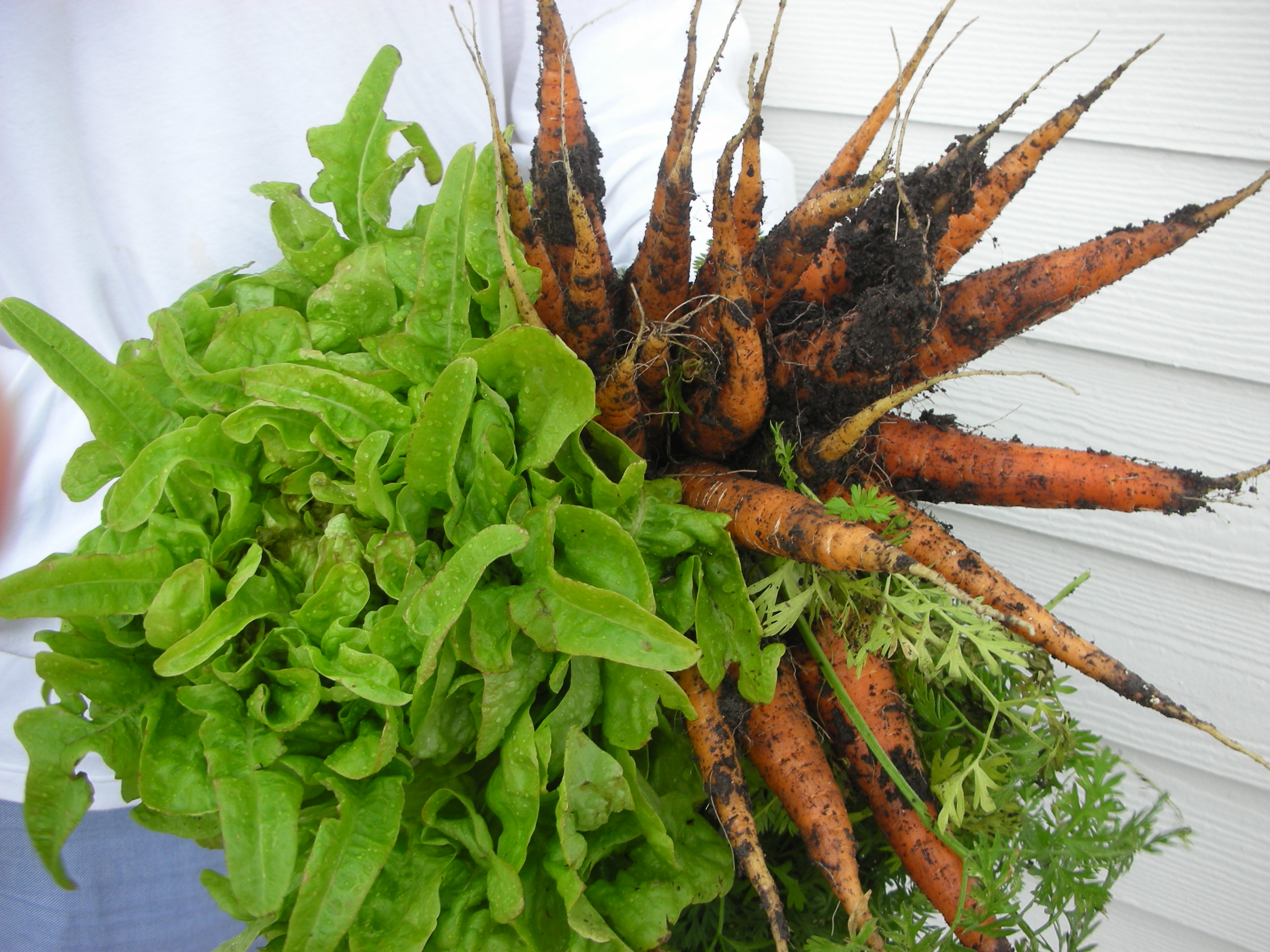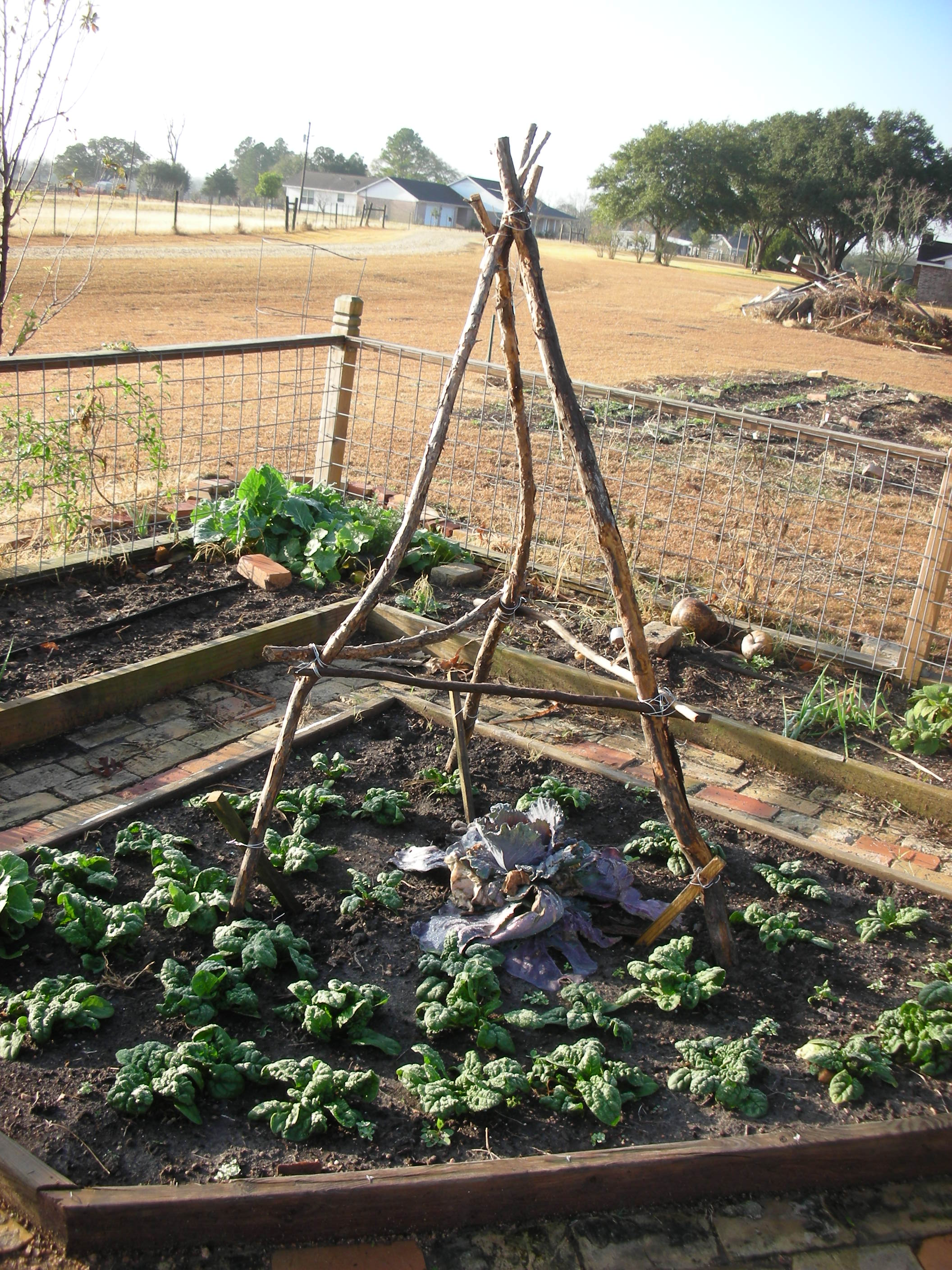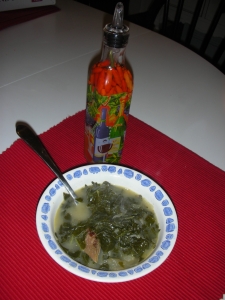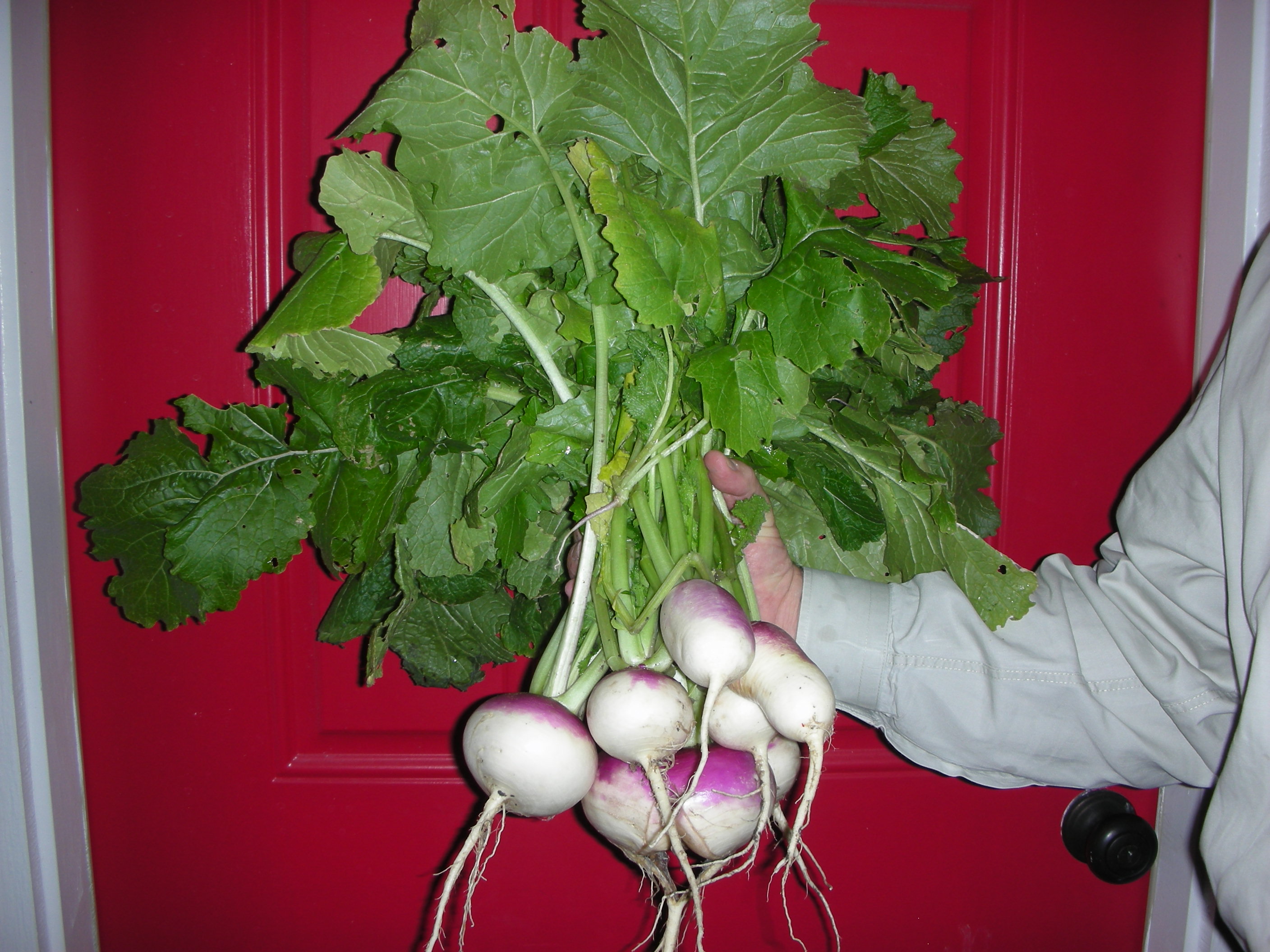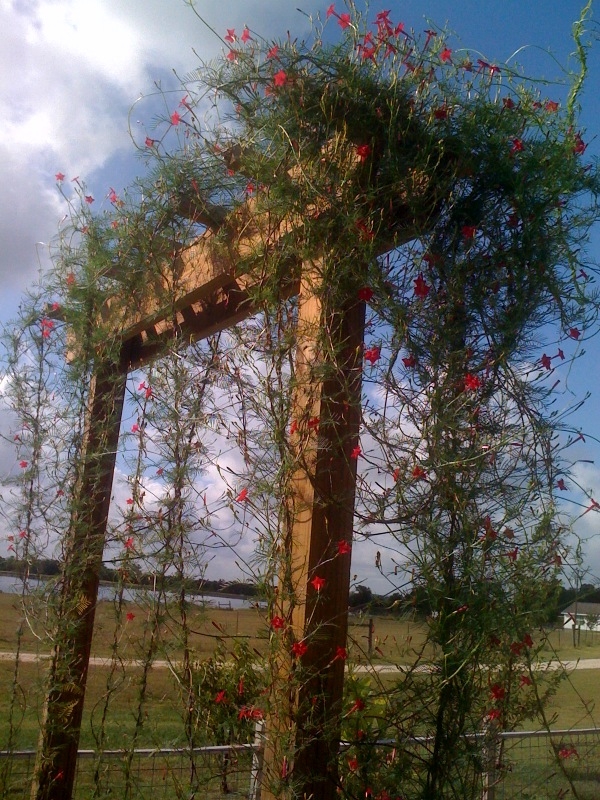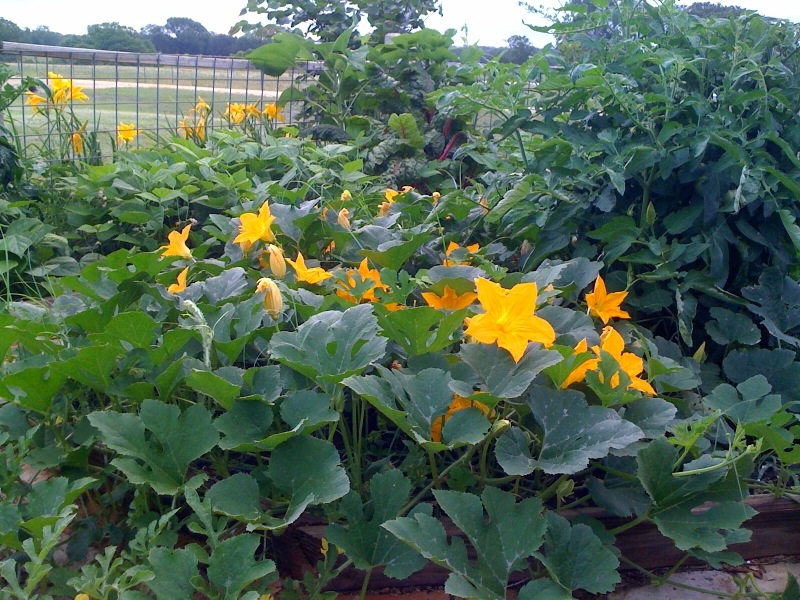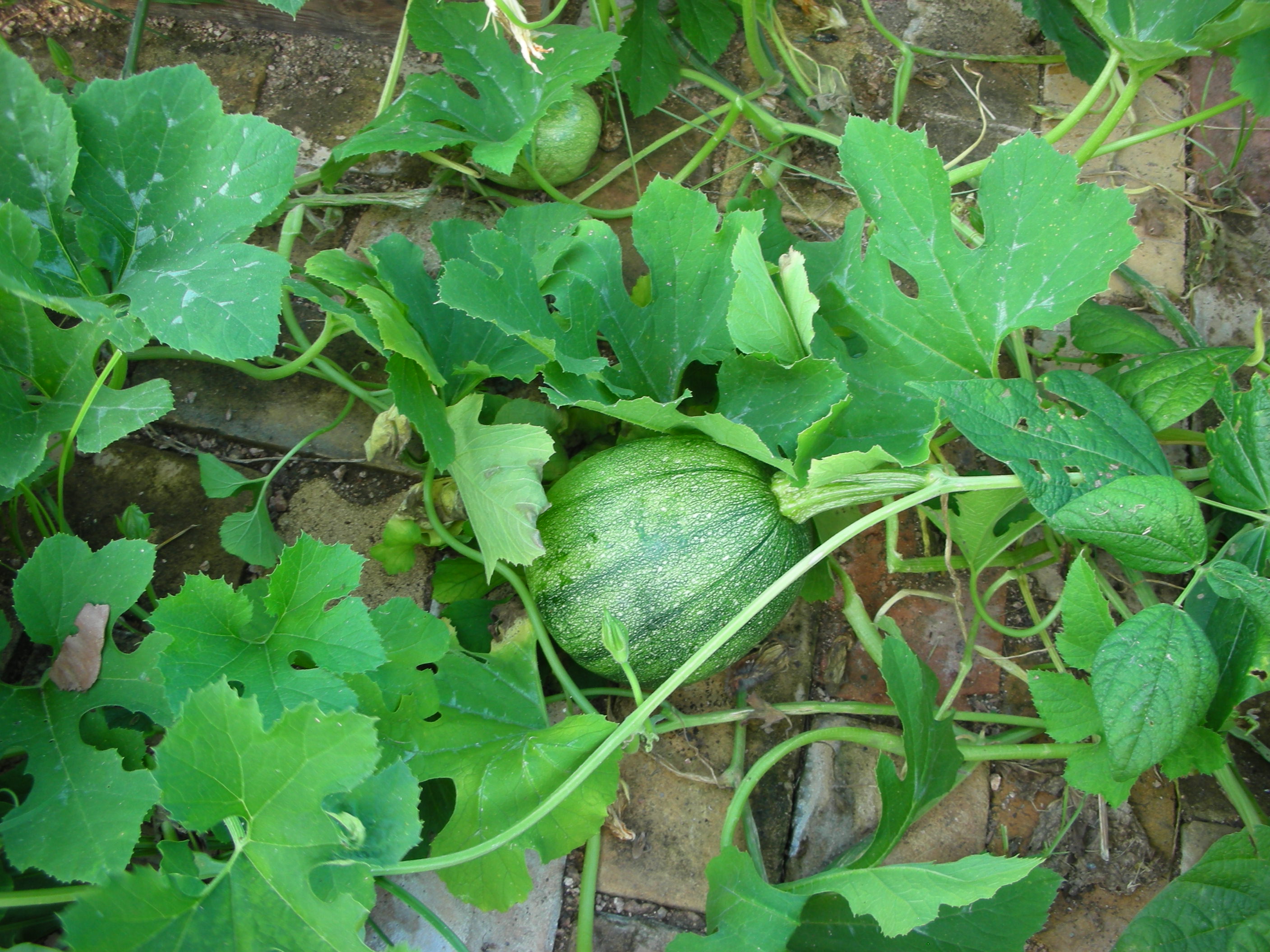Two years ago, I was training for the MS 150 outside of Cat Springs, Texas. As I turned a corner and started down a long straight path, I saw something very unusual up ahead of me; a cedar tree covered in big white flowers. Well, I knew that couldn’t be right so I pedal closer. When I got close enough to be able to tell what I was seeing, I was shocked to discover that the white flowers on the cedar tree were coming from an incredibly large rose-bush. I am not kidding, this rose-bush had sent out runners that were 30 to 40 feet long. They were so long that they went all the way up the back of the tree and hung over the front almost down to the ground. I was excited.
 I wasn’t sure but I thought this lovely, five petaled white rose with the bright yellow stamens was an antique rose called “Cherokee”. The Cherokee Rose is truly an antique rose. It has been here so long that some think it originated here. In fact, the people of Georgia were so certain it was native that they made it their state flower. I quickly pulled out my pocket knife and took a dozen cuttings. This is why I love “antique roses”. You can be on a bike ride in the country, find one, take cuttings with a pocket knife, stick them in your back pack, leave them there for over two hours and still be pretty certain that they are going to root.
I wasn’t sure but I thought this lovely, five petaled white rose with the bright yellow stamens was an antique rose called “Cherokee”. The Cherokee Rose is truly an antique rose. It has been here so long that some think it originated here. In fact, the people of Georgia were so certain it was native that they made it their state flower. I quickly pulled out my pocket knife and took a dozen cuttings. This is why I love “antique roses”. You can be on a bike ride in the country, find one, take cuttings with a pocket knife, stick them in your back pack, leave them there for over two hours and still be pretty certain that they are going to root.
Propagating antique roses from cuttings is a fairly easy process.
- As a general rule, you should cut new wood that has just finished blooming. This is usually in the spring but can be in the fall. The rose is not particular as to where you cut it. I use sharp shears to make 45 degree cuts to create stems that are about 6″ to 8’’ long. Leave a few leaves on the stem.
- Next, I fill four-inch pots with a good quality garden mix and wet it. Some people root in pure perlite, but you will need to add a little fertilizer if you go this route. Most cuttings need two things to be successful: moisture and root aeration. The perlite provides excellent aeration to the roots.
- Stick the cutting in the pot. Many people like to dip the cuttings in a rooting hormone. This is your choice. It can increase your chances of getting the cuttings to take. However, I am not certain they are necessary. Roses naturally produce auxins at the cut. Auxins are hormones that stimulate root production. I have used both methods and have had success both ways. Also, some people like to “wound” the cutting at the base. This involves making little cuts at the base of the stem. Roots will grow from the wound sites.
- Place the well watered pot in a produce bag and seal with a tie wrap. This will keep the humidity high as the plant roots. Open the bag every few days and make sure the soil stays moist (not wet).
- Roses love the sun so find a place that is sunny but gives some shade during the hottest part of the day. Since they are in the bag, it is very easy for them to get over heated.
 Propagating plants is undoubtedly my favorite task in the garden. Roses (especially old varieties) are very tough and very easy to grow from cuttings. Don’t get too bogged down in the details. Just go for it! Remember, many of these antique roses came here in a box of dirt on the back of a covered wagon with mason jars stuck over them. If they survived that, surely they can survive anything we do to them!
Propagating plants is undoubtedly my favorite task in the garden. Roses (especially old varieties) are very tough and very easy to grow from cuttings. Don’t get too bogged down in the details. Just go for it! Remember, many of these antique roses came here in a box of dirt on the back of a covered wagon with mason jars stuck over them. If they survived that, surely they can survive anything we do to them!


